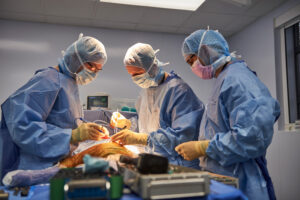Performance and Rehabilitation Centre: Stronger for Longer
Willows is one of Europe’s leading small animal referral centres. Our state-of-the-art Hospital is led by internationally renowned Specialists committed to providing the highest standards of veterinary care.
Our Performance and Rehabilitation Centre, led by Kinley Smith, Specialist in Small Animal Surgery, works collaboratively with our multidisciplinary team of Specialists including Diagnostic Imaging, Anaesthesia and Analgesia, Clinical Nutrition and Veterinary Physiotherapy to provide gold standard care and treatment for patients with musculoskeletal disease.

What is Musculoskeletal Disease?
Musculoskeletal disease is an injury affecting muscles, ligaments, tendons or joints and includes tearing a muscle or pulling a tendon. A common approach to managing musculoskeletal diseases involves rest with pain-relieving medication, which can lead to improvement. However, injuries to ligaments and tendons can take surprisingly longer to heal than broken bones! Your pet might seem to be better after a few weeks; however, if the injury has not healed fully, there is a risk of causing further damage. As such, it is important that the precise location of the injury is identified, and the appropriate treatment is prescribed to ensure the injury has healed before a pet resumes normal exercise.

What are the Signs of Musculoskeletal Disease?
Musculoskeletal disease is often first noticed when a pet develops a lameness. A detailed orthopaedic examination can enable the problem to be identified. However, musculoskeletal disease can be subtle, and the only sign that a pet has a problem may be a reluctance to run or jump. In these patients, it is also important for a very detailed Orthopaedic examination to be carried out. However, it may be necessary to carry out further tests such as scans, blood tests or keyhole surgery (arthroscopy) to reach a diagnosis.
At Willows, our aim is always to undertake the required tests as soon as possible, and this may mean that your pet will need to stay with us for a few days whilst these investigations are completed.
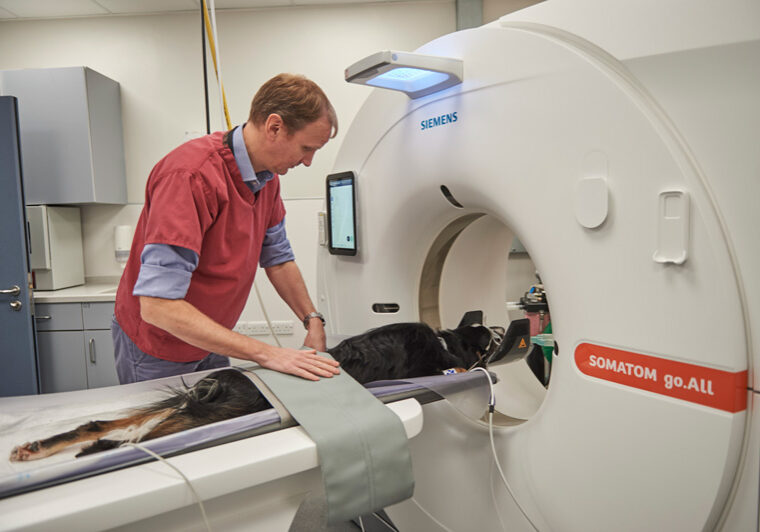
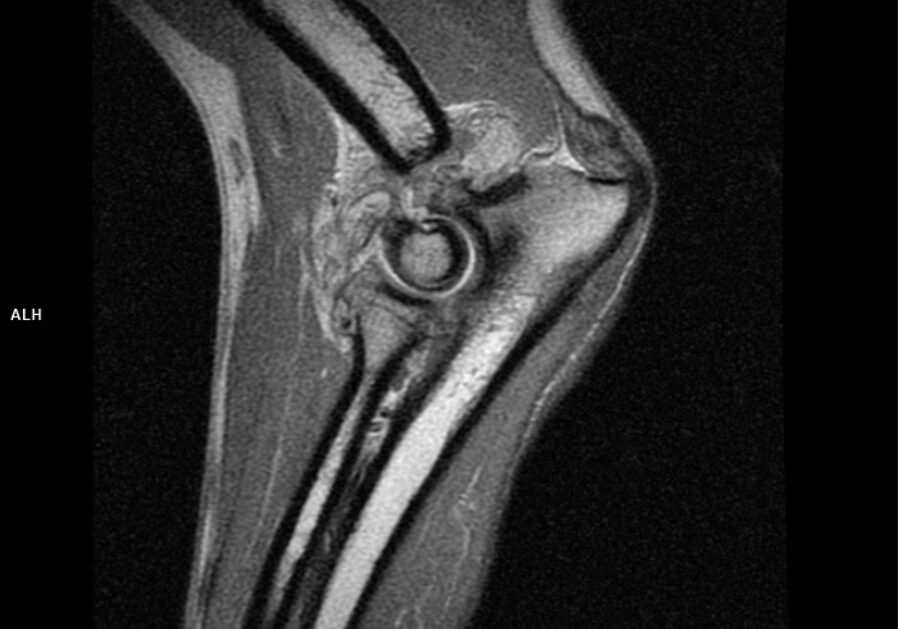
What Treatments are Available for Musculoskeletal Disease?
Physiotherapy is an essential part of recovery from musculoskeletal disease. Controlled movement is required to encourage these tissues to heal. An assessment by Willows Veterinary Physiotherapy team forms an integral part of many patient’s treatment plan.
Physiotherapy aims to stimulate the body’s natural healing process, reduce pain and restore mobility and function. Willows Veterinary Physiotherapist will provide a tailor-made treatment plan that will include recommendations for walking and exercises to be performed on your pet at home to support their recovery further.
Regular reassessment with Willows’ Veterinary Physiotherapist will be required to ensure the healing process is working effectively and allows adjustments to be made to the treatment plan, ensuring the fastest recovery.
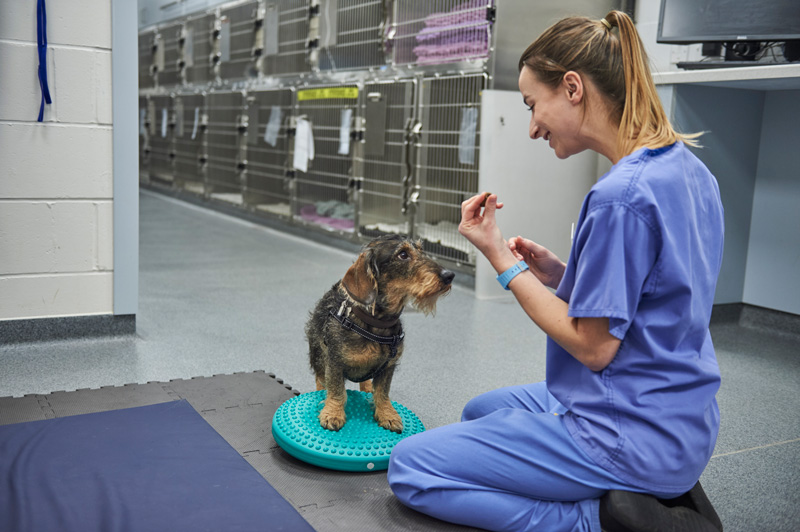
Rehabilitation
Chronic musculoskeletal disease is a long-term injury or disease affecting muscle, ligaments, tendons or joints and pets of all ages can be affected. Examples include osteoarthritis (often referred to as arthritis) or long-term tendon pain (tendinitis). Most pets with such problems will have long-term lameness or reluctance to exercise. Initially, pets will regularly be given pain-relieving medication, which can reduce lameness. This may be effective in the short term; however, these medications may mask rather than cure the disease.
Chronic musculoskeletal disease can have a profound effect on your pet’s health. Pets can become depressed, aggressive or anxious when they are in pain. Cats will often go outside less and sleep more if they have sore joints. A dog may change the way they use their legs which can cause problems in other legs or the spine. It is quite common for lameness in a dog to be caused by a problem that has arisen secondary to a previously undiagnosed primary condition. By treating both the primary and secondary conditions, it can be possible to make a patient comfortable more quickly and maintain that state for longer than if treating the conditions separately.
Accurately identifying chronic musculoskeletal disease can present many challenges. A detailed Orthopaedic examination is required to assess all areas where a pet might be experiencing pain. Often an examination will require further tests, including scans, blood tests and joint fluid analysis, to understand the importance of each of these painful sites. Once all of the disease processes or injuries have been identified, an appropriate treatment plan can be created. This may involve medications, local injections, physiotherapy, pain relief, surgery, and a number of specific techniques to encourage healing.
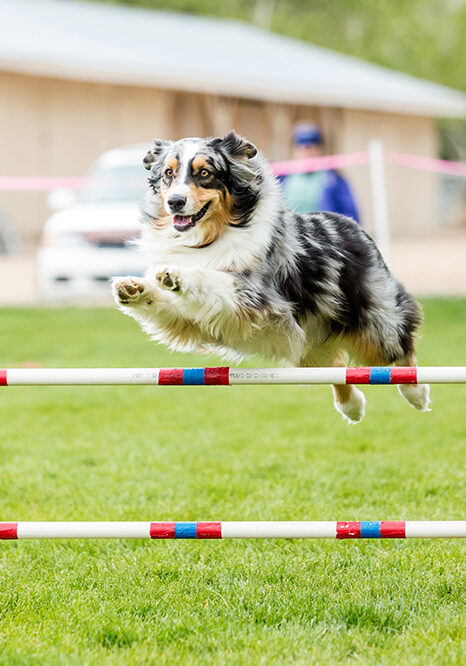
What Can I Expect if my Pet is Treated for Chronic Musculoskeletal Disease?
Some chronic musculoskeletal disease can be cured; however, often, the condition requires lifelong treatment. Willows’ Veterinary Physiotherapy team will assess your pet to determine what level of exercise is best for them. They will also show you specific exercises to help heal, maintain muscle health, and improve your pet’s comfort before and after exercise. Pain relief may be required; as such, Willows Specialist Anaesthesia team can assess your pet’s requirements to determine the most appropriate combination of pain-relieving medications to make your pet comfortable and reduce the risk of side effects.

Life-Long Care
Pets with chronic musculoskeletal disease may change due the way that the disease appears over time. They might become increasingly lame, lose muscle or become lame on a different limb. At Willows Performance and Rehabilitation Centre, our Specialist-led team believe that regular reassessment will help identify these changes earlier. Early detection is incredibly important and ensures that prompt intervention can prevent such changes from becoming more painful and make them easier to manage and quicker to respond to treatment.
A pets’ musculoskeletal system changes every single day from a growing puppy to an elderly cat. An animal’s muscles, bones and joints respond to the health and exercise of the body they are in. To maintain a healthy musculoskeletal system, it is important to exercise, feed and care for your pet in different ways for appropriate stages in their life. This may change if your pet becomes unwell or suffers an injury and making the right decisions early can lead to a faster and more complete recovery. Furthermore, it is possible to help prevent additional injury by making the right changes to their lifestyle.
Willows Performance and Rehabilitation Centre provides care and advice for your pet at every stage of their life. Our Specialist-led team also understand the challenges of owning a pet with musculoskeletal disease and are here to support you through your pet’s treatment.

